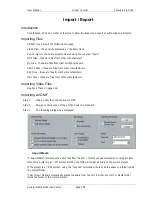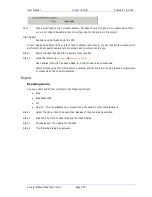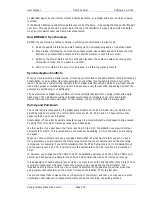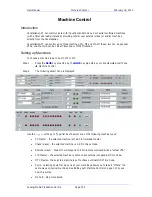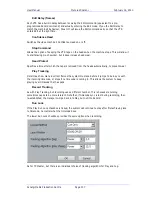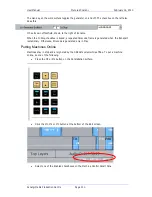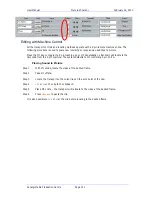
User Manual
M
ACHINE
C
ONTROL
February
16,
2010
Xynergi Media Production Centre
Page 308
Remote (Slave) Mode
When a machine (M1 or M2) with this setting is placed on-line, it means that DREAM II emulates
a 9-pin machine, and will obey commands sent to it. It is the master for timecode. At the same
time, its transport controls are active.
Select 9-pin ID
Allows you to choose the type of machine being emulated by DREAM II. This allows for slight
variations in the 9-pin protocol.
Status Sense Play Tally
Controls an aspect of 9-pin performance.
This parameter controls the value of bit0 #0 Byte#1 in the Sony Protocol command: “0x7X 0x20”
Status Data (sent from DreamII system to the Sony master device, in response to the “0x61 0x20”
Status sense command.). If “Play Only” is set, the value of this bit is 1 only when Dream is in Play
or Record modes. If “Play and varispeed” is set, the value of this bit is 1 when Dream is in Play,
Record or varispeed modes.
Some equipment (e.g. DspMedia postation) requires this parameter to be set to Play only, to work
correctly. Some equipment, (e.g. SoundMaster), requires this parameter to be set to Play and
Varispeed to work correctly.
LTC Chase
When a machine (M1 or M2) with this setting is placed on-line, it means that DREAM II will chase
Longitudinal Time Code entering the SMPTE In port on the SX-20.
Play Tracking
Determines how many incorrect frames the system must see before it jumps to be in sync with
the incoming timecode, or stops if no timecode is coming in. This allows the system to keep
playing over timecode that has gaps.


